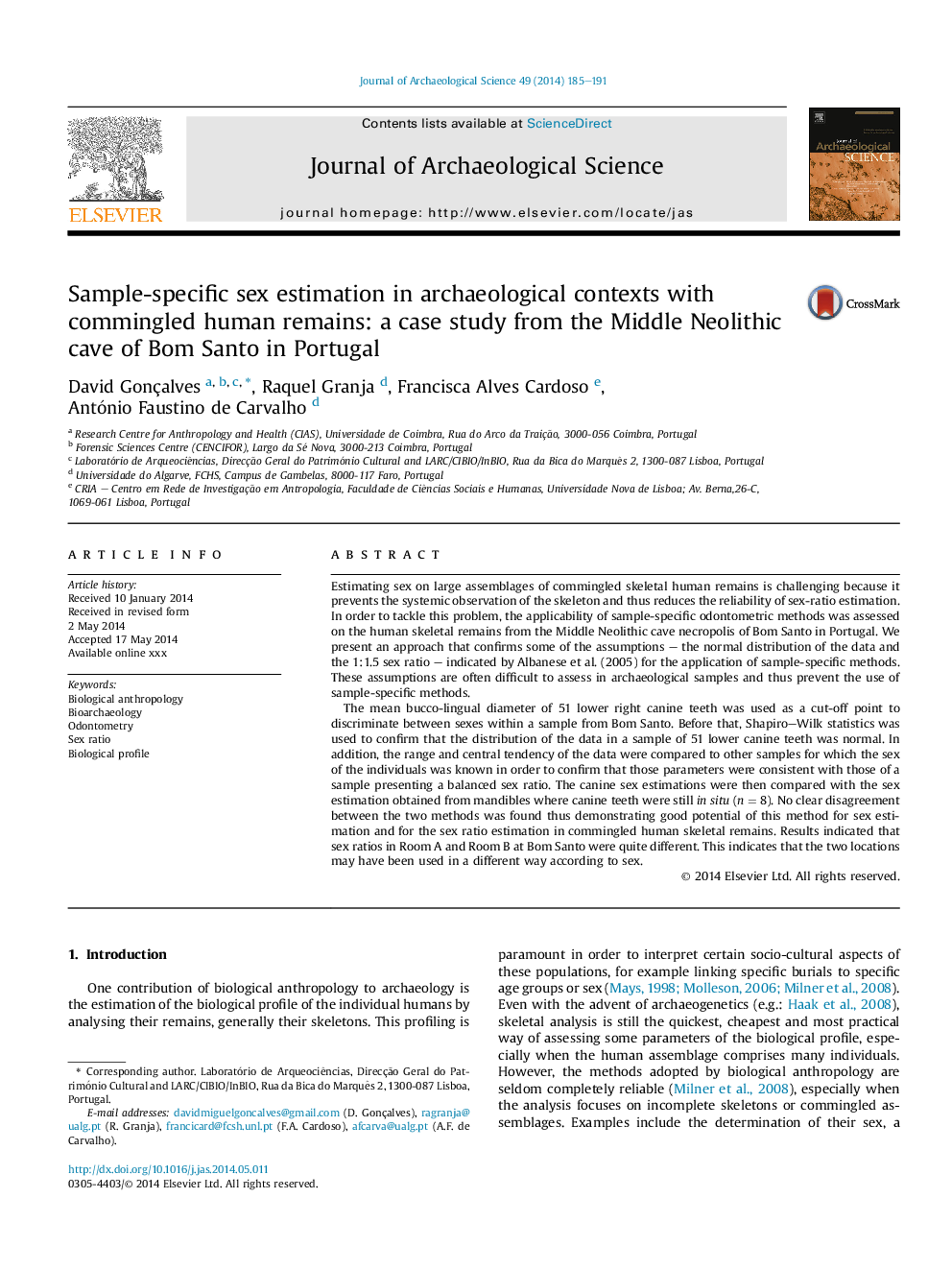| Article ID | Journal | Published Year | Pages | File Type |
|---|---|---|---|---|
| 7442968 | Journal of Archaeological Science | 2014 | 7 Pages |
Abstract
The mean bucco-lingual diameter of 51 lower right canine teeth was used as a cut-off point to discriminate between sexes within a sample from Bom Santo. Before that, Shapiro-Wilk statistics was used to confirm that the distribution of the data in a sample of 51 lower canine teeth was normal. In addition, the range and central tendency of the data were compared to other samples for which the sex of the individuals was known in order to confirm that those parameters were consistent with those of a sample presenting a balanced sex ratio. The canine sex estimations were then compared with the sex estimation obtained from mandibles where canine teeth were still in situ (n = 8). No clear disagreement between the two methods was found thus demonstrating good potential of this method for sex estimation and for the sex ratio estimation in commingled human skeletal remains. Results indicated that sex ratios in Room A and Room B at Bom Santo were quite different. This indicates that the two locations may have been used in a different way according to sex.
Related Topics
Physical Sciences and Engineering
Materials Science
Materials Science (General)
Authors
David Gonçalves, Raquel Granja, Francisca Alves Cardoso, António Faustino de Carvalho,
